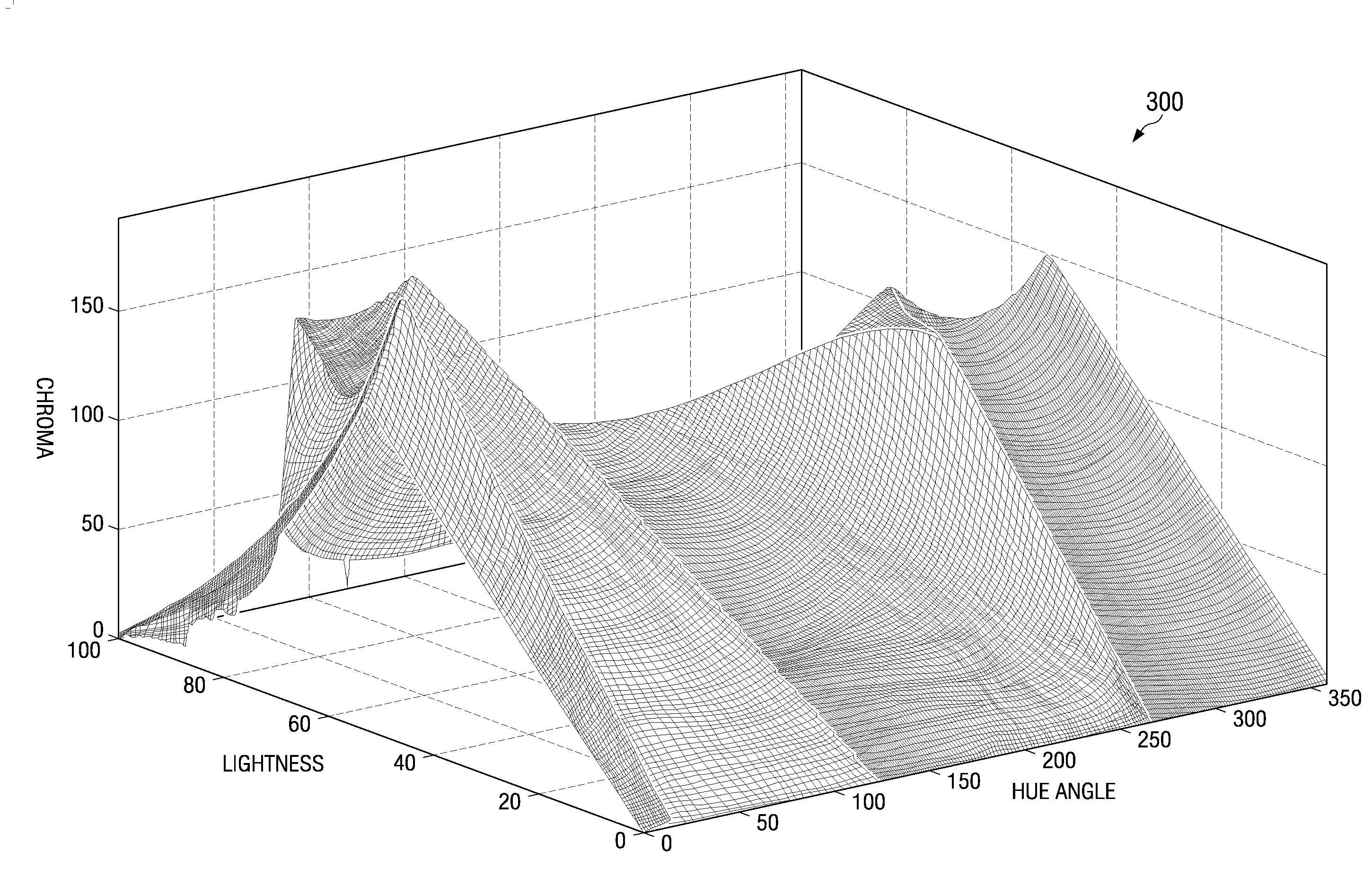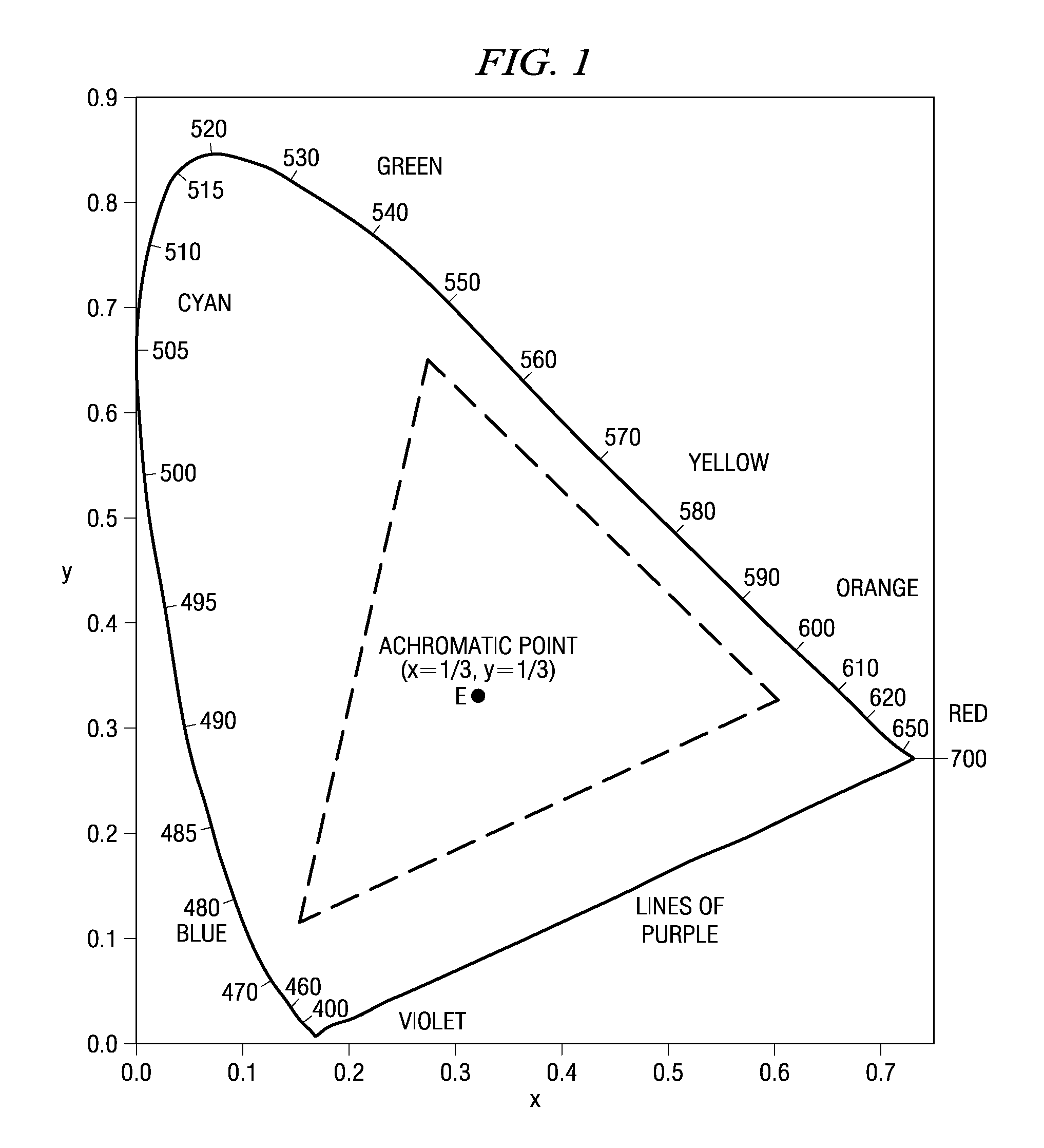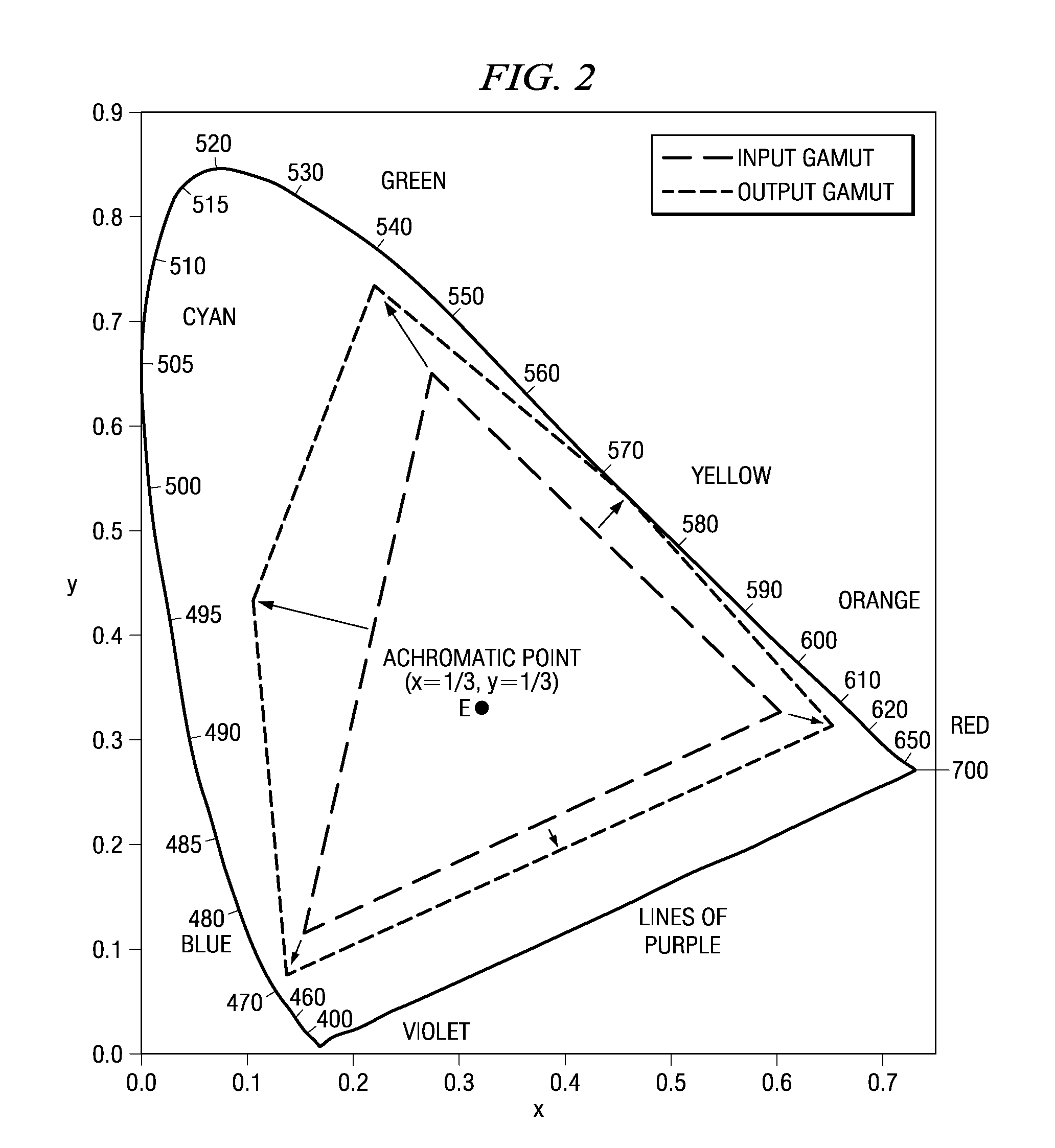Color mapping techniques for color imaging devices
a color imaging and color mapping technology, applied in the field of color mapping techniques for color imaging devices, can solve the problems of not using the full capabilities of the target device, the target's expanded color range is wasted, and the recorded colors of the input signal may not be reproducible within the target color gamut, so as to improve calorimetric accuracy, smooth out transitions, and preserve memory colors effectively
- Summary
- Abstract
- Description
- Claims
- Application Information
AI Technical Summary
Benefits of technology
Problems solved by technology
Method used
Image
Examples
Embodiment Construction
[0027]The disclosed embodiments generally employ a three dimensional perceptual color space to model color gamuts. Examples of such perceptual color spaces would be CIELUV and CIELAB, which represent colors in a more uniform manner. Perceptual color spaces represent color gamuts using three distinct axes: hue, lightness, and chroma. Thus, any color gamut in a perceptual color space may be represented graphically as a 3-D raised relief map, showing the relationship between hue, lightness, and chroma. By way of example, FIG. 3 illustrates an exemplary input color gamut 300 as a raised relief map, while FIG. 4 illustrates an exemplary output color gamut 400 as a raised relief map. As has been discussed above, the input 300 and output 400 color gamuts often differ, as may be seen by comparing the raised relief maps of the input 300 and output 400 color gamuts shown in FIG. 3 and FIG. 4.
[0028]It is often desirable to maintain hue when mapping an input color gamut to a different output co...
PUM
 Login to View More
Login to View More Abstract
Description
Claims
Application Information
 Login to View More
Login to View More - R&D
- Intellectual Property
- Life Sciences
- Materials
- Tech Scout
- Unparalleled Data Quality
- Higher Quality Content
- 60% Fewer Hallucinations
Browse by: Latest US Patents, China's latest patents, Technical Efficacy Thesaurus, Application Domain, Technology Topic, Popular Technical Reports.
© 2025 PatSnap. All rights reserved.Legal|Privacy policy|Modern Slavery Act Transparency Statement|Sitemap|About US| Contact US: help@patsnap.com



